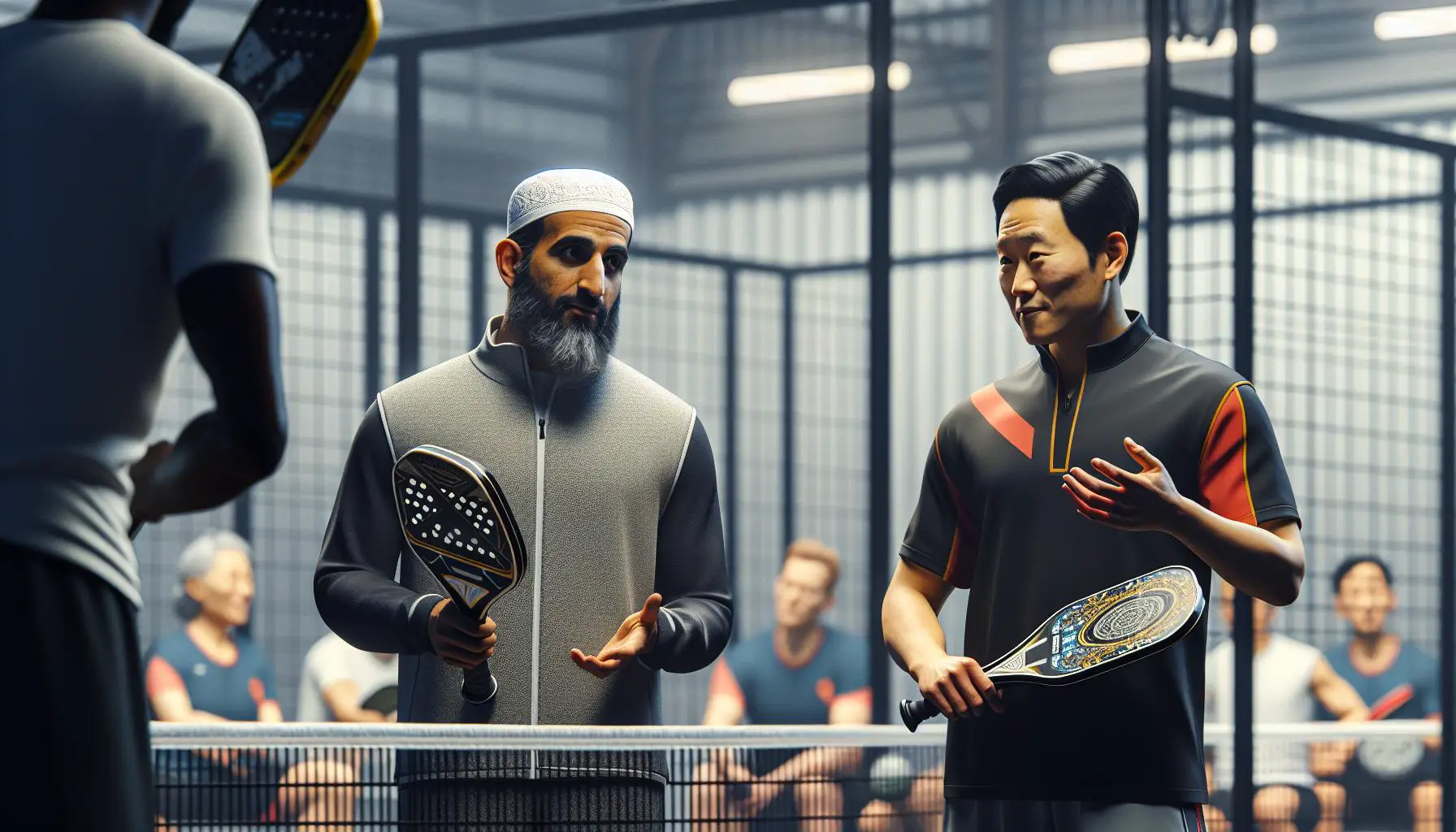Pickleball’s skyrocketing popularity isn’t just about the fun and camaraderie on the court; it’s also about mastering the game’s unique rules. Among these, understanding timeouts and breaks during matches is crucial for both newbies and seasoned players. It’s not just about catching your breath; it’s a strategic part of the game that can turn the tide in your favor.
Navigating the specifics of when and how you can take a moment away from the action can be a game-changer. Whether you’re cooling down, strategizing with a partner, or simply needing a moment to refocus, knowing the ins and outs of pickleball’s timeout rules is essential. Let’s dive into the details that can help you make the most of these breaks, keeping the game fair, competitive, and enjoyable for everyone involved.
Importance of Timeouts and Breaks in Pickleball Matches
In the fast-paced world of pickleball, timeouts and breaks are more than mere pauses in play. They are strategic tools that players can use to their advantage, affecting the flow and outcome of the game. Understanding the importance of these breaks is crucial for players at all levels.
Firstly, timeouts offer players a moment to catch their breath and regroup. Given the quick exchanges and constant movement that pickleball demands, these breaks can be critical for maintaining physical stamina and preventing injuries. It’s not just about resting the body, though. Timeouts also provide a valuable opportunity for mental recalibration. Players can use this time to adjust their game plan, shift their strategies, or simply clear their minds of any stress or frustration that might have built up during play.
Moreover, timeouts can serve as a psychological tool, impacting not only the player who calls it but also their opponent. A well-timed timeout can disrupt an opponent’s momentum, breaking their focus and potentially turning the tide of the match. It’s a subtle art, knowing when to call a timeout for maximum effect, but it’s one that can have a significant impact on the match’s outcome.
While timeouts are initiated by players, breaks such as those between games and at changeovers are mandated by the rules. These pauses serve a similar purpose, allowing players to rest and strategize. However, they also ensure fairness and consistency in play. By having set breaks, all players are guaranteed equal opportunities for rest, regardless of how the game is progressing.
Health and safety are another critical aspect of these breaks. In outdoor tournaments, for instance, conditions can be harsh, with high temperatures and direct sunlight. The breaks allow players to hydrate, cool down, and apply sunscreen, reducing the risk of heat-related illnesses and ensuring that the competition remains at its highest quality.
Additionally, for those new to the sport, understanding and utilizing timeouts and breaks can significantly enhance their playing experience. It allows newcomers to manage the pace of the game better, making the sport more accessible and enjoyable. Veterans, too, appreciate the depth that these rules add, making every match not just a physical contest but a mental chess game.
Understanding Timeout Rules in Pickleball

Pickleball, a sport that blends elements of tennis, badminton, and ping-pong, has specific rules regarding timeouts, crucial for players to understand and strategize around. Each team or player is allowed a set number of timeouts during a match, providing valuable minutes to strategize, rest, or reset mentally.
The Basics of Timeout Allocation
In typical pickleball matches, both singles and doubles teams are allocated two one-minute timeouts per game in a best-of-three games match. This allocation is slightly different in singles play, where each player gets an opportunity to take these short breaks to recalibrate or catch their breath. It’s essential to note that unused timeouts do not carry over to the next game or match.
When to Call a Timeout
Deciding the optimal moment to call a timeout can be as strategic as the game itself. Players often use timeouts when:
- They sense a loss of momentum.
- They need to disrupt an opponent’s winning streak.
- Physical or mental fatigue sets in.
- There’s a need to discuss strategy with a partner in doubles.
Calling a timeout at the right moment can significantly impact the game’s outcome, making it a tool for more than just physical rest.
Timeout Restrictions
While timeouts offer strategic benefits, players must adhere to certain restrictions to ensure fair play. For instance, timeouts can only be called when the ball is not in play—specifically, before the next serve. Additionally, during official tournaments, if a player calls a timeout without having any remaining, they are subject to a fault, giving an advantage to the opponent.
Strategic Considerations
Experienced players view timeouts as strategic assets. They’re not just breaks but opportunities to change the game’s flow, making them critical in tight matches. Strategic uses of timeouts involve:
- Cooling down an opponent’s momentum
- Recovering from minor injuries or adjusting equipment
- Psychological gamesmanship, such as breaking the concentration of an opponent
Moreover, in tournaments, especially those held outdoors in varying weather conditions, calling a timeout can also be a tactical decision to wait out temporary unfavorable conditions, such as strong winds or sun glare.
Proper Timing and Protocol for Taking a Timeout

In pickleball, knowing the proper timing and protocol for taking a timeout is as important as the strategy behind using them. A timeout can be called by either player in singles or by any one player in doubles. However, the timing of when to call a timeout is tightly regulated to ensure the flow of the game isn’t unnecessarily disrupted.
Timeouts can only be called:
- Before the start of a serve.
- After a point has been scored or a fault has occurred, but before the start of the next serve.
It’s crucial for players to signal a timeout by clearly verbalizing “Timeout” loud enough for the opponent and the referee—if present—to hear. This declaration avoids any confusion and ensures the game is paused according to the rules.
Tactical Advantages of Timely Timeouts
Players frequently use timeouts to their tactical advantage. Strategically calling a timeout can help in several ways:
- Breaking Momentum: When opponents are on a winning streak, calling a timeout can disrupt their rhythm and give the caller a chance to regroup.
- Strategic Planning: Timeouts offer a moment to discuss strategy with a partner in doubles or to mentally prepare the next moves in singles.
- Physical Recovery: They allow players a brief respite to catch their breath, hydrate, or recover from a minor strain, which can be critical in long and intense matches.
Successfully leveraging these moments can turn the tide of a match, making the timing of timeouts a critical component of pickleball strategy.
Rules and Restrictions
Pickleball’s governing body outlines clear rules and restrictions regarding timeouts to keep the game fair and competitive. Each team or player is allotted two timeouts per game in a standard match, each lasting one minute. In tournament play, the specifics can vary, but the standard allowance is a key rule to remember.
Key Timeout Restrictions:
- Timeouts not used in a game do not carry over to the next.
- Calling a timeout without having any remaining is considered a fault, leading to the loss of a point or the serve.
Players must be mindful of their timeout inventory and the state of play to avoid unintentional faults that could compromise their position in the match.
- Notify the Opponent and Referee: Making intentions clear prevents misunderstand
Strategic Use of Timeouts to Gain Advantage

In pickleball matches, timeouts aren’t just breaks; they’re strategic tools that players use to shift the game’s momentum in their favor. These brief pauses allow players to regroup, reassess, and tweak their strategies against opponents who might be gaining the upper hand. Timing is crucial when calling a timeout, as it can significantly alter the flow of the game.
One effective way to utilize timeouts is to interrupt the opponent’s momentum. Imagine a scenario where the opposing team is on a scoring streak. Calling a timeout can break their rhythm and give them time to overthink their strategies, potentially leading to errors. Conversely, if a player finds themselves in a slump, a timeout offers a moment to breathe, refocus, and disrupt the downward spiral of consecutive lost points.
Another strategic use of timeouts involves physical and mental recovery. Pickleball, while seemingly straightforward, demands quick reflexes, sharp focus, and continuous movement. In intense matches, fatigue sets in, blurring decision-making and slowing reactions. A timely timeout grants players a precious minute to catch their breath, hydrate, and wipe away the sweat. This brief respite can make a noticeable difference in performance, especially in the closing stages of a tight game.
Timeouts also offer a golden opportunity for on-the-fly coaching and strategizing. Players can consult their teammates or coaches, discussing adjustments to their game plan based on the match’s current state. Whether it’s switching serving strategies, altering positioning, or planning a surprise attack, these discussions can be pivotal in turning the tide of the match. It’s here, in these moments of pause, that games can be won or lost based on the quality of decisions made.
Understanding the psychology behind timeouts adds another layer to their strategic importance. Psychological warfare in sports is real, and timeouts can play a significant part in it. By calling a timeout at a crucial juncture, players can sow seeds of doubt in their opponents, making them ponder the reason behind the pause. Is a new, unpredictable strategy about to unfold? The uncertainty can be unnerving, leading to hesitation and mistakes on the part of the opponent.
Conclusion
Mastering the art of timeouts in pickleball isn’t just about knowing when to take a breather. It’s about using these moments as a tactical tool to swing the momentum in your favor. Whether it’s disrupting your opponent’s flow, catching your breath, or huddling up for a quick strategy session, the right timeout can be a game-changer. Remember, it’s not just the physical game that benefits from these breaks. The mental and strategic aspects of pickleball are equally rejuvenated. So next time you’re on the court, don’t underestimate the power of a well-timed timeout. It might just be the ace up your sleeve.














0 Comments